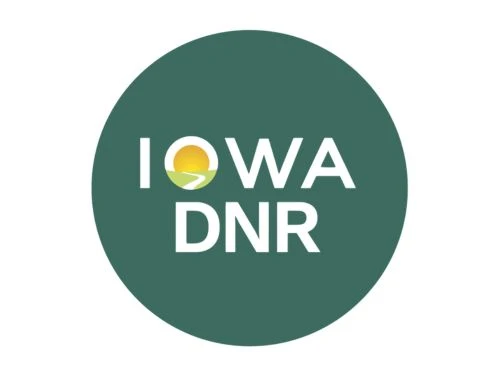Ringed by trees and away from the busy roads in eastern Louisa County, Klum Lake has undergone a significant makeover over the past decade or so. The 250-acre natural floodplain lake – historically connected to the Mississippi River by Muscatine Slough – had been filled with eight-foot-tall cattails with only a handful of small open water pockets for limited hunting.
Beginning in 2011, the Iowa DNR began a spraying project to knock back the cattails and diversify the marsh vegetation. Spraying was done from an airplane and occurred every few years and began to show signs of progress. With advancing drone technology came improved accuracy, lower costs and better results.
“This wasn’t on people’s radar for the longest time because even driving on the access lane, a lot of people didn’t recognize the size of the marsh because the view was blocked by forest and cattails. Even now, unless you get out on it, you don’t realize what a great wetland this is,” said Andy Robbins, wildlife biologist with the Iowa Department of Natural Resources (DNR).
The marsh is 1-1/2 miles long from top to bottom and as it opened up, different vegetation appeared – pickerelweed, duckweed, coontail, water lilies, wild millet and smartweed.
“It’s kind of a duck buffet right now,” he said. “We know a lot more people are using it – the spraying really diversified the vegetation and also allowed more public use – we’re seeing a lot more birds using it, too.”
Sitting quietly on the marsh, boat motor off, listening to the gurgling from under the surface and watching bubbles come up. Monarchs and bumble bees are going from flower to flower on the pickerelweed. Frogs are everywhere. The marsh is a dynamic system.
Klum Lake is home to nesting sandhill cranes, Blanding’s turtles and tons of ducks. “It’s become a huge roost for snow geese and speckle bellies in the spring,” he said.
There are two primitive boat ramps on the east side that can handle medium sized duck boats with mud motors – regular motors are useless here due the lack of water depth and thick submergent vegetation. Kayaks are also a good option. Access to the boat ramps and the outlet to Muscatine Slough is available from a mile-long lane off County Road X61, that is also popular for a slow drive or walk in nature.
“This is a really neat wetland that not many people know is here,” Robbins said. “It’s a natural backwater wetland off the Mississippi River that is probably indicative of what was once more common here.”
The 250-acre wetland covers roughly one-third of the area, the remaining two-thirds is in forest with older growth oaks on the higher bluffs along the west side. This part of the area is a morel mushroom hunting destination. The DNR has developed a forest stewardship plan that will be implemented to enhance the woodland component and address the invasive species.
Klum Lake Wildlife Area is adjacent to Louisa County’s Langwood Education Center, a 130-acre area used primarily for field trips and public programs, that is also available to rent for weddings, youth group camp-outs, reunions, birthday parties or just a quiet place to hang out with friends and family for a few days. Langwood is open by reservation only or for public programs.
